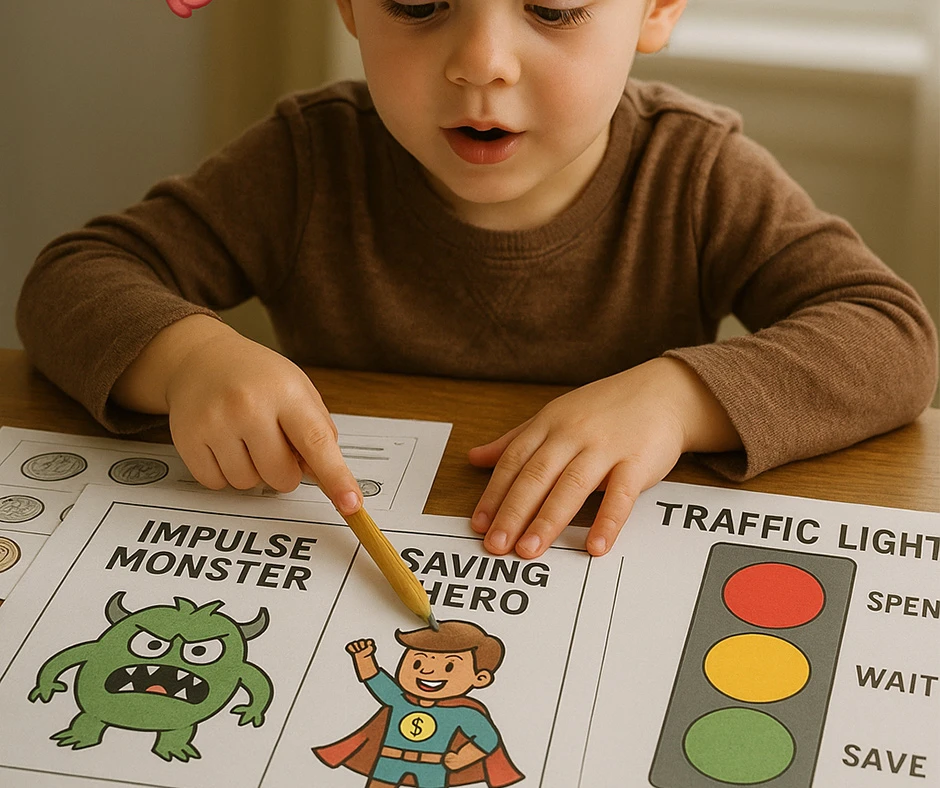The secret of money games: teaching emotional intelligence without sermons
Children don't just need to know how to spend wisely. They need tools to manage their emotions in the face of instant gratification.

“A child who learns to wait learns to choose wisely.” — Dr. Walter Mischel
Children don't just need to know how to spend wisely. They need tools to manage their emotions in the face of instant gratification.
Why emotions influence children's financial literacy
Financial habits don't start with math, but with emotions. According to the CFPB, children develop fundamental financial behaviors before age 7, influenced by how they manage impulses and frustration.
Two printable activities that turn emotions into smart financial decisions
- “Impulsive Monster vs. Saved Hero” (comic book – page 7): Kids choose who wins and why, encouraging reflection and delayed gratification.
- “Money Traffic Light” (coloring decision chart – page 8): Children sort the options red/yellow/green and explain their reasoning.
Brain-Based Learning: Why Visual Games Develop Impulse Control
University of Toronto research: Symbolic tools (role-playing, coloring pages, storytelling) improve executive function and self-regulation. Money games make feelings visible, so children act intentionally, not reactively.
At home you will notice a real change
| What your child earns | What you gain as a parent |
| Manage emotional spending | Less tantrums at the checkout |
| Think before you spend | Calmer shopping conversations |
| Links elections with emotions | Natural talks about values |
| Build trust through decisions | A more focused and independent child |
Final Thought: Teaching children to save isn't just about coins, it's about character. Start with pages 7 or 8 of the printable workbook. True emotional strength, taught through fun.






